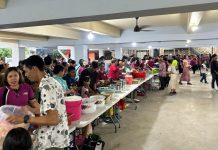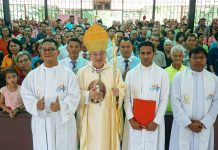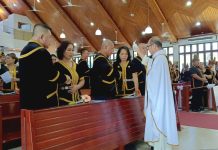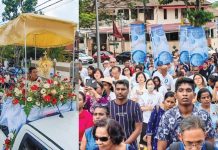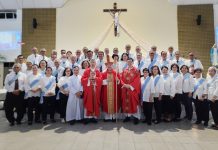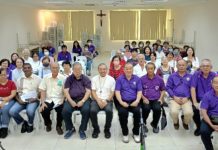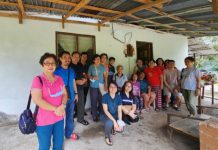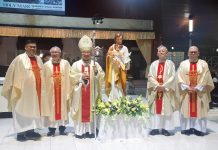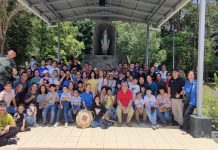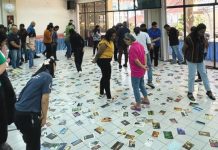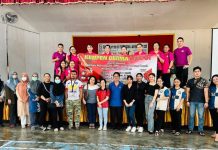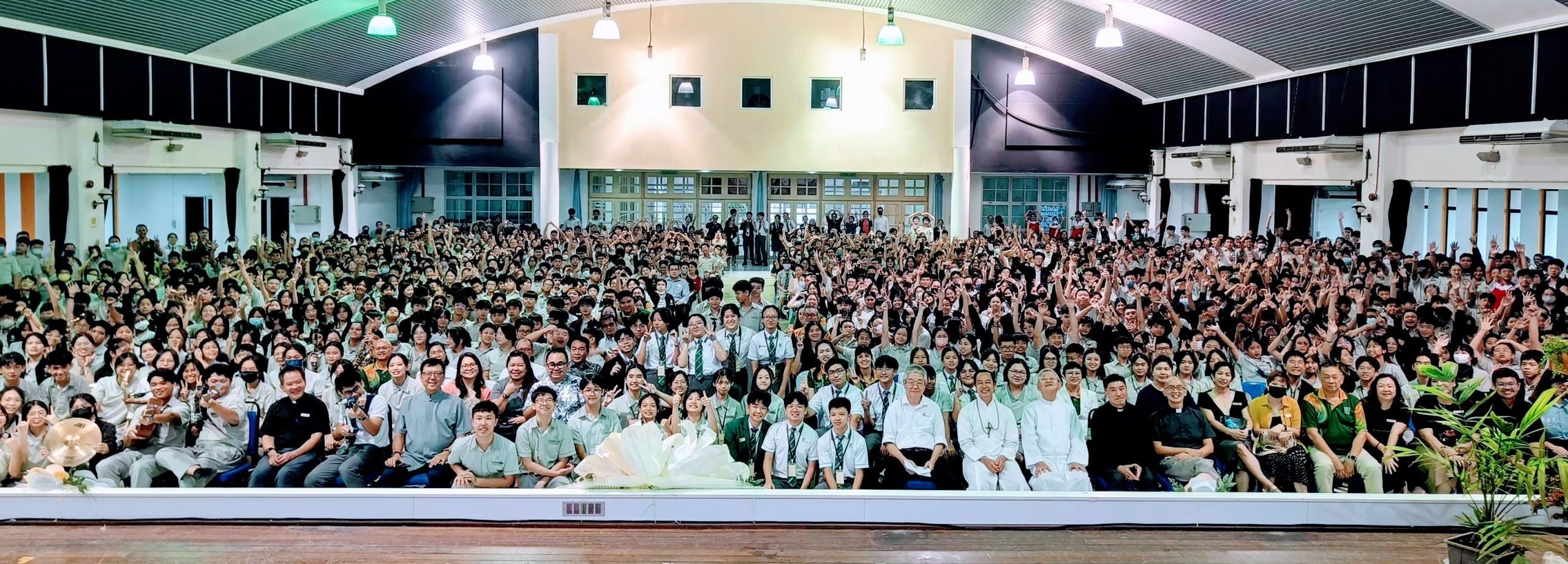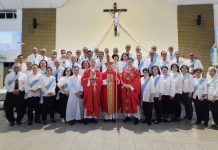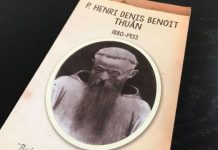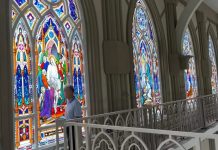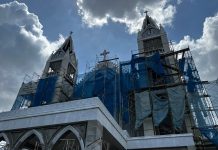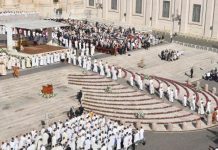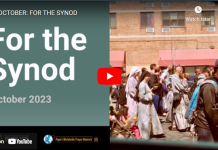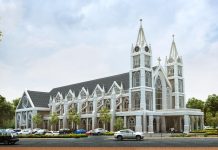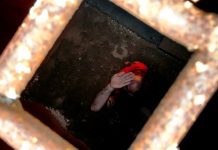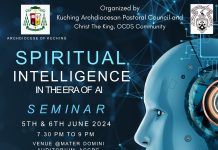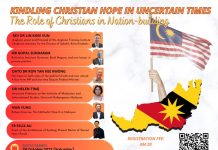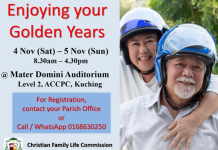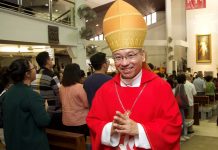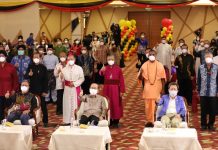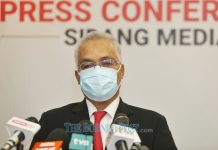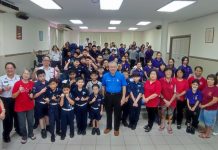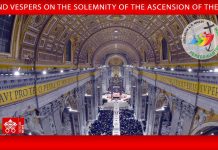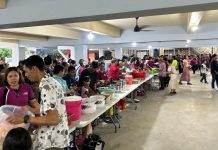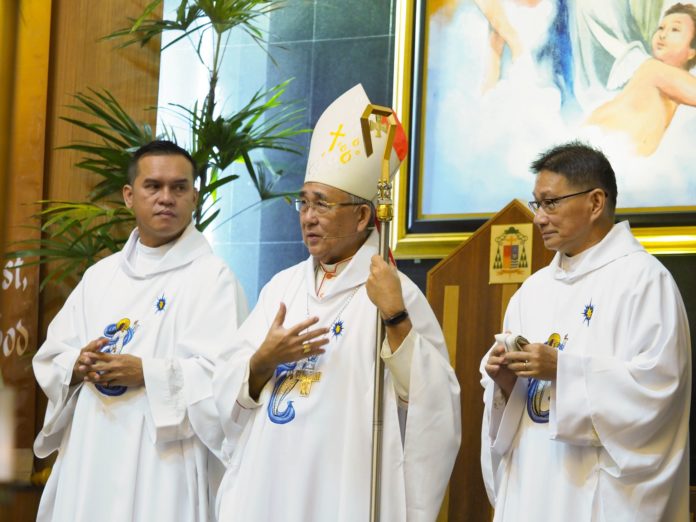
BANDAR SERI BEGAWAN, Brunei — The Catholic community of Church of Our Lady of Assumption, Brunei, filled the church to its capacity as they gathered for the Thanksgiving Mass on the Solemnity of the Assumption of the Blessed Virgin Mary.
Together with the Vicar Apostolic Bishop Cornelius Sim, Fr Arin Sugit and Fr Paul Shie, the people gave thanks to God for the dedication of Church of Our Lady of Assumption (COLA) on 15 August 50 years ago.
In his homily, Bishop Cornelius urged Catholics to strive to be an engaging and ‘living’ church. He said that the church is not just a place of worship, but it is also a people and community. Thus, he called on all the lay faithful to actively participate in the life of the church.
“We should not become a ‘zombie’ church,” he said, “a church that looks outwardly alive but dead inside.”
The prelate hoped that Catholics in Brunei would continue to be a living church to see another 50 years to come.
In conjunction with the 50th anniversary, the parish gave out certificates to a couple celebrating their 50th wedding anniversary, and 30 individuals celebrating their 50th birthday this year.
After Mass, the congregation packed the church hall for a fellowship dinner. They were entertained by performances put up by the youth. There was nothing extravagant to boast about, but the noisy chatter and laughter that filled the hall was proof of an exuberant community.
The parish also celebrated the 20th sacerdotal anniversary of Fr Paul Shie, who was ordained on 16 August 1999 by Bishop Anthony Lee (the Bishop Emeritus of Miri Diocese) in Bandar Seri Begawan. His anniversary wish was simple, “Pray for me,” as he told those who congratulated him.
During the dinner, the new statue of Our Lady, called ‘Iban Mother Mary’ was unveiled. The wooden statue depicts Our Lady of the Iban ethnicity. The inspiration to make the statue was drawn from Bishop Sim’s frequent meeting with the ethnic people. For now, it is the first of its kind.
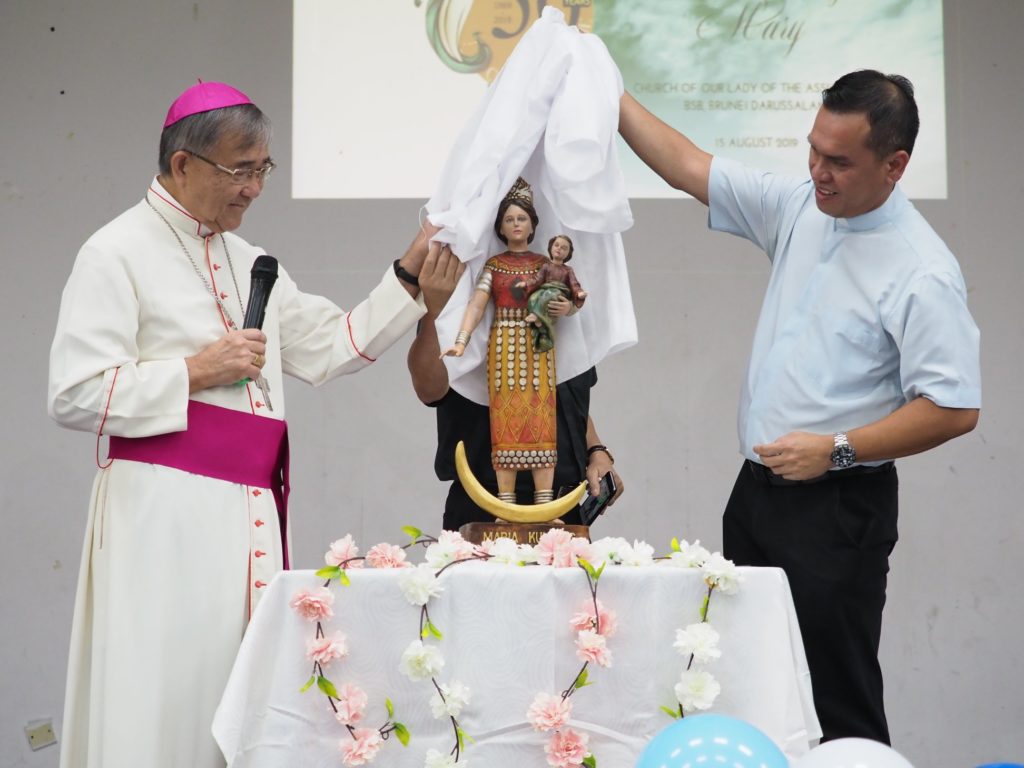
The Catholic Church in Bandar Seri Begawan has a long history dating back to the arrival of the early missionaries. Unfortunately, there were no proper records until 1927 when Brunei was included in the new Prefecture of North Borneo.
Before COLA existed, it was St George’s School in the 1940s. The school was named after its founder and benefactor, George Newn Ah Foott, whose land the school still sits on today. George Newn and his daughters even helped to manage and re-establish the school afterthe Japanese Occupation (1942 – 1945). After the war, Mill Hill Missionary priests continued to travel to Brunei from Labuan to administer to the Catholic community there. There were no resident priests then.
In 1952, the Church in Brunei was included in the newly created Vicariate of Kuching, with Bishop John De Vos as the first Vicar Apostolic of Kuching. Fr Delaney was appointed the resident priest in Brunei Town in 1953. In 1957, a new church building was built and named St George’s Church.
On 19 December 1959, the Vicariate of Miri – Brunei was erected, with Bishop Anthony Galvin as the Vicar Apostolic.
In 1968, the construction of a new church, which is the present church building, began. A year later, the new church was completed and was dedicated to Our Lady of Assumption by Bishop Galvin on the feast of Assumption, 15 August. Since then, St George’s Church was renamed the Church of Our Lady of the Assumption.
The Catholic Church of Brunei went through three more ecclesiastical circumscriptions: Diocese of Miri – Brunei (31 May 1976); Apostolic Prefecture of Brunei Darussalam (21 November 1997) with Bishop Cornelius Sim as its first Bruneian bishop; and Apostolic Vicariate of Brunei Darussalam (20 October 2004).
Catholics in Brunei constitute five percent of Brunei’s population. They are made up of mainly Filipinos, Malaysians, Indonesians, Indians and others. Only 10 percent are indigenous Bruneian Catholics.
Audrey Yu


